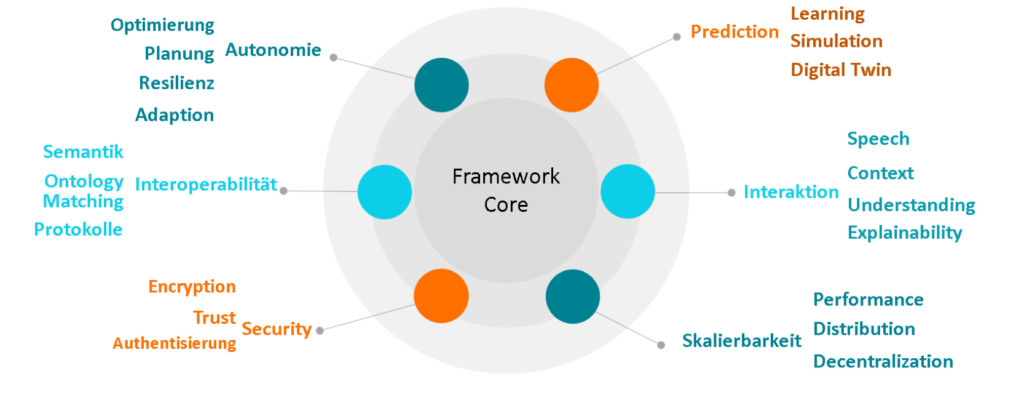Autonomous Systems
In the future, digitization will permeate all areas of life, from the home to industrial production and networked cities. The number of technical devices, along with their computing power and interconnectivity, is continually increasing. As a result, the real and digital worlds are fast merging into an “Internet of Things” (IoT). There are already many billions of IoT devices worldwide and this number is expected to more than double in the coming years. At the same time, awareness and acceptance of artificial intelligence and machine learning is growing within society.
These technical and social changes form the basis for the development of autonomous systems. These consist of robots, intelligent networked devices and software components that solve complex problems independently for and often in collaboration with humans. Autonomous systems are often implemented using a multi-agent paradigm, targeting applications in dynamic and indeterminate environments. For this reason, their operational context does not need to be clearly and completely defined in advance; they adapt to their environment and situation. Such systems are used in hazardous environments (e.g. rescue robots) or for fatiguing tasks such as driving and maintenance.

In view of these trends and the many ongoing challenges they present, intensive research is needed into the development of a new generation of autonomous systems that strongly address the following essential characteristics:
- Autonomy: Independent decision-making, planning and coordination
- Adaptation: Coping with unforeseen events
- Prediction: Learning and predicting future events
- Seamless interaction: Intuitive, proactive and multimodal user interaction
- Scalability: Applicability on both large and small scales
- Security: Safeguarding of system and (user) data against attacks
- Interoperability: Interaction capabilities with the rest of the digital world
- Explainable AI: Traceability and explainability of the decision making process
For the construction of autonomous systems there are particularly stringent requirements on tools for efficient and error-free development, and for comprehensive and realistic testing and monitoring.
